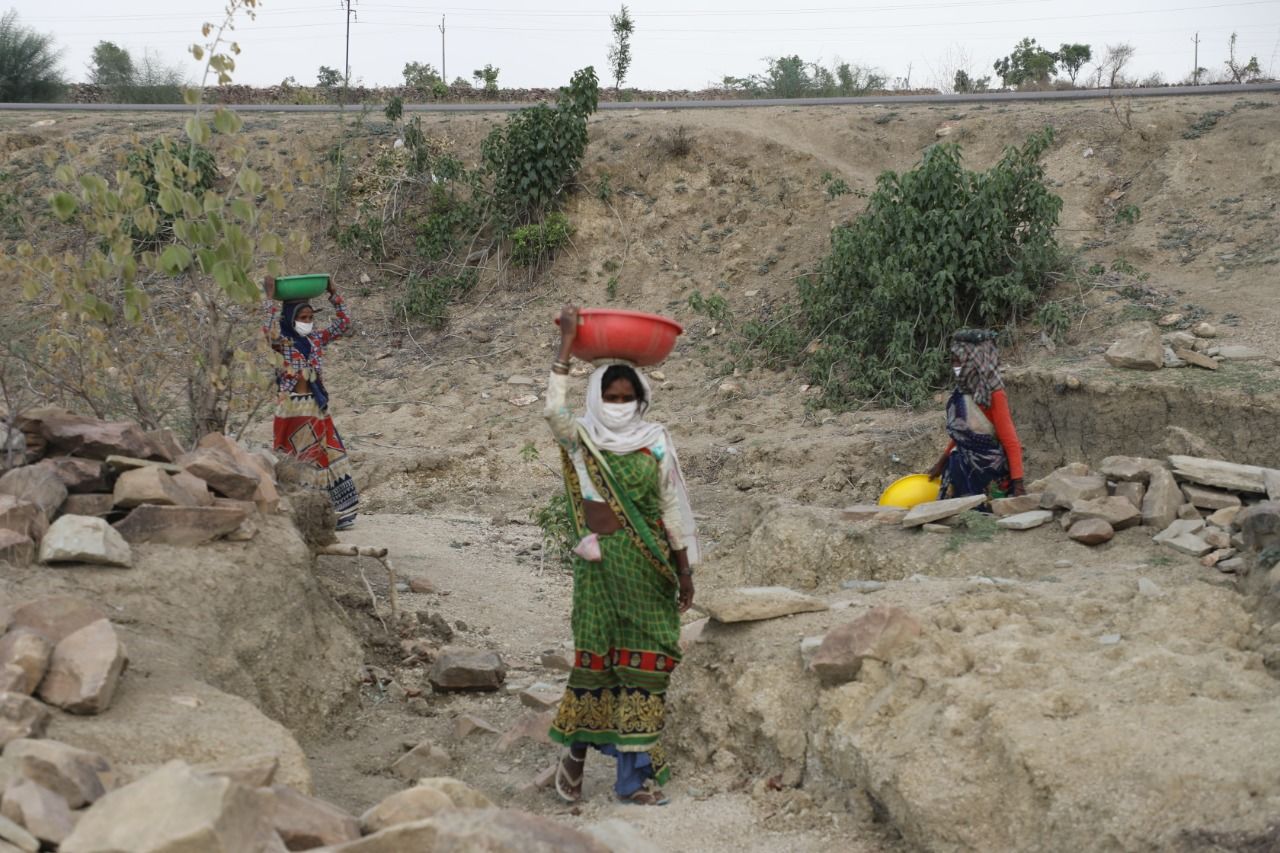UP employed 57.13 lakh under MGNREGA, highest in India, but what’s the ground reality?
The state goverment recently revealed that it has engaged 57.13 lakh workers under the MGNREGS, however data analysis reveals three out of four workers did not get any work


Uttar Pradesh’s population stands at about 23 crore. This estimates to around five crore households in the state. In 2019-20, 2.56 crore people from 1.77 crore households were enrolled in MGNREGA (Mahatma Gandhi National Rural Employment Guarantee Act). This suggests that 35% of families in Uttar Pradesh have a job guarantee under MGNREGA within the state, amounting to an income of Rs 18,200 per household in a year. Uttar Pradesh accounts for 18 per cent of the total workers employed under MGNREGA in the country and has generated 7.93 crore man-days. So, why do a large number of people from the state migrate in search of livelihood?
These are some interesting facts from the official website of MNREGA, the largest employment scheme.
- Three out of four MGNREGA workers did not get any work. Only 64,58,515 (25.25%) out of the total 2,55,80,478 workers got work
- Under the MGNREGA scheme, workers are entitled to get 100 days of work. But only 2.5% of households who were provided employment got 100 working days.
- On an average, only 37.87 days of work were provided to these 64.59 lakh workers.
The district-wise data reveals that the Siddharth Nagar district is the top-performing district where 41.07% of workers are given employment. On the other hand, Ghaziabad is the worst-performing district. It has not given any work under MGNREGA. In terms of average days of work, Balrampur district tops the list. On an average, it has given 48.75 days of work to 82,534 workers.
Varanasi has only given jobs to 18.75% workers under MGNREGA that too with 28 days of work on average.
The situation in the state capital, Lucknow, is worse. Only 15.75 registered workers have got employment. In Gorakhpur, chief minister Yogi Adityanath’s constituency, only 21.07% workers have got jobs under MGNREGA.
This is the situation on the ground in one of the largest states of India. MGNREGA scheme has the great potential to solve the employment and migration-related problems if it is implemented in a transparent way. It also needs to move beyond traditional work provided so far under the scheme so that it can generate more employment for registered workers. In the wake of COVID-19, the government is looking at MGNREGA to boost the rural economy. But that wouldn’t be possible unless MGNREGA workers are engaged in MSMEs and agri-based industries. To do that, the government should try to establish/attract such industries to rural areas.
The full table of districts sorted of workers given employment can be looked below (in %)




